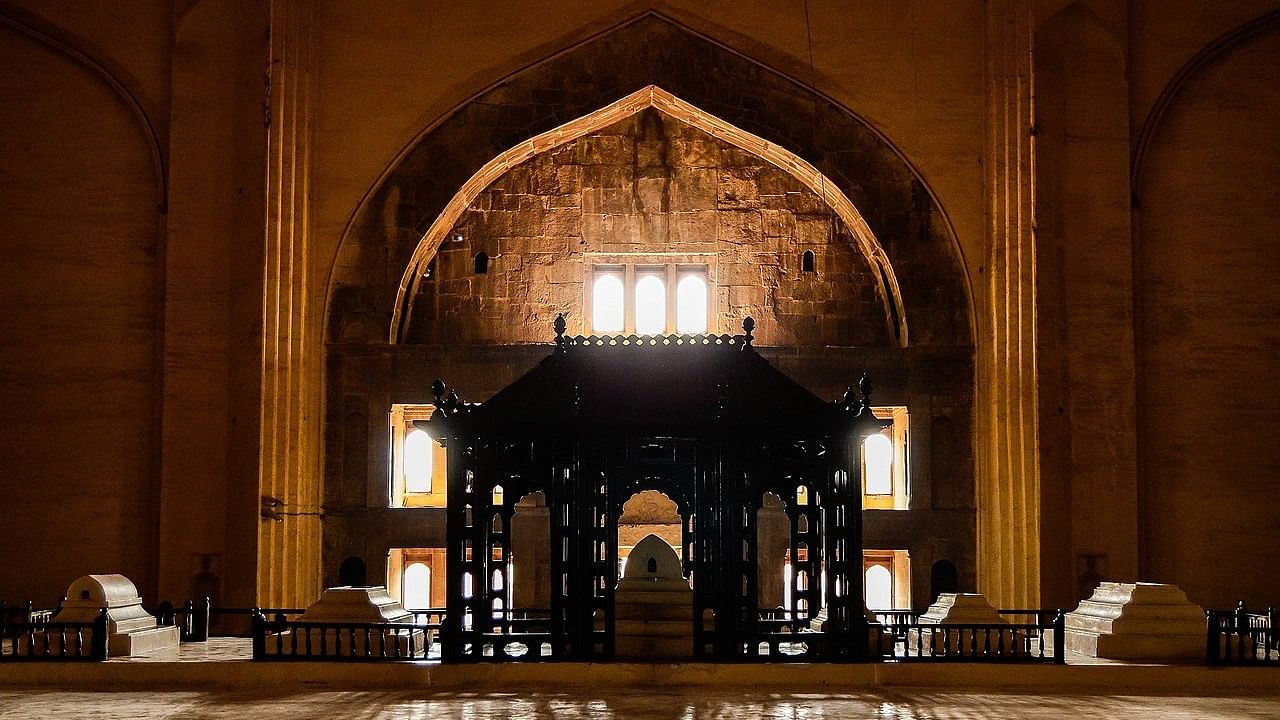
The inside of Gol Gumbaz.
Credit: Wikimedia Commons
The great dome of the Gol Gumbaz at Bijapur — the tomb of Sultan Mohammed Adil Shah (1627–56), the seventh ruler of Bijapur — is one of the grandest constructions of early modern South Asia. Until 1936, it was the largest dome in the world, and to this day, continues to awe visitors — and not just for its size, but also for its almost magical ability to amplify sound. Circling the interior of the tomb, on the sixth storey, is a whispering gallery, which is where the acoustic effects are most pronounced, amplifying sound by up to 10 times. According to an urban legend, the dome was specially designed so that it could magnify the whispers of the sultan’s courtesan during their clandestine meetings.
The Gol Gumbaz is not the only structure built in this region during this period that hosts such mythmaking. The entrance to the central citadel at Golconda Fort has similar aural characteristics and is believed to have been acoustically engineered so that guards could warn the defenders of any intrusion just by clapping their hands. However, this claim may not withstand a thorough examination, since realistically, any intruders would have been noticed by troops stationed on the outer walls of the fort well before they reached the entrance gate.
What was it about these structures that gave them such acoustic qualities? The answer could be partly attributed to their design. Both structures consist of a dome that is balanced on tapered archways set into thick walls — originally designed with the intention of dwarfing visitors with their imposing size and engineering. This, coupled with the materials used in their construction, determines the way sound works within these structures.
Sound waves move in straight lines and reflect off hard, smooth and dense surfaces. The domes are made of solid concrete, and their interiors feature minimal decoration today, which allows sound waves to easily bounce off the walls, up the arches and then reverberate within the dome. Historically, however, these domes may have been draped in cloth and decorated with carpentry and objects for display, which have since been removed. Such ornamentation would have made these structures much less conducive to acoustic amplification since the sound waves would have been absorbed by the various objects within the dome.
The acoustic qualities of these structures can therefore be attributed to a number of things — the nature of sound itself, the design of these structures, the construction materials, and the absence of the original ornamentation. Irrespective of whether the domes of the Gol Gumbaz and the Golconda Fort actually possess the acoustic qualities that they are famous for, the romantic tales associated with these marvels of Deccan engineering do raise some interesting questions around the shifting contexts of a structure and the nature of mythmaking.
Discover Indian Art is a monthly column that delves into fascinating stories on art from across the sub-continent, curated by the editors of the MAP Academy. Find them on Instagram as @map_academy